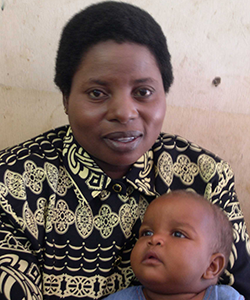An audience profile helps describe a member of the audience as a “typical person” representing the audience segment. An audience profile can be developed for all prioritized audiences – primary and influencing. To develop the profile, review the data collected about the prioritized segment and summarize what is known about them. This summary profile should include the following information:
- Demographic information, such as geographic location, gender, age, number of children, marital status
- Current values and beliefs
- Current behavior as it relates to the targeted behavior and health area
- Known barriers and facilitators that help or prevent adoption and/or maintenance of the desired behavior
- Psychographics and any other key insights about the audience gathered during the analysis phase, such as aspirations, desires for the future, fears or concerns
- Sources of information and preferred media channels, such as radio, television, social media, peers, and coworkers
Below are two sample audience profiles, one of a woman of reproductive age who is the primary audience for family planning services, and the second of her spouse, the influencing audience.
Audience Profile – Family Planning Client
 Photo credit: © 2005 Jane Brown, Courtesy of Photoshare |
Ambitious Zione (Primary Audience) Demographics: Zione is 27 years old, a married mother of two children. She runs a small business selling tomatoes in a market near her home. She completed primary school. She speaks Chichewa and can understand basic English. Knowledge/Values/Beliefs: Zione is familiar with most modern contraceptive methods and understands the benefits of having a smaller family. With only a primary school certificate, Zione wants to go back to school. She aspires to be a modern, successful mother and businesswoman. To do this, she wants to delay having any more children right now. She knows she can get contraceptives either from a private clinic or from the public clinic, but she would prefer a method that doesn’t require repeat visits to the clinic. Current Behavior: Zione is hesitant to discuss contraceptive methods with her husband, but they have talked about how they can plan well for their family. Zione is a lapsed contraceptive (pill) user, and they are not using any method right now. Barriers/Facilitators to Desired Behavior: Zione doesn’t like the side effects of hormonal methods. If she could find a method with fewer side effects that doesn’t require repeat clinic visits, she would definitely try it. Preferred Sources of Information: Local/community radio, women’s investment group, friends and peers, fellow market women, and social media, especially her WhatsApp group. |
Audience Profile – Spouse of Family Planning Client (Influencer)
 Photo credit: © 2001 Harvey Nelson, Courtesy of Photoshare |
Worried Ben (Influencing Audience) Demographics: Ben lives in an urban center and works at a local restaurant. He has a secondary education and is married with two children. Knowledge/Values/Beliefs: Ben values large families and would like to have two or three more children, but he is worried that if he and his wife have more children now, they won’t be able to take care of them. His family is already struggling to get ahead. He’s heard rumors that some hormonal methods make it difficult to have a baby later. As a result, he feels that he and his wife don’t have many options. Non-hormonal methods such as condoms or female condoms are a barrier to intimacy and will only mean they don’t trust each other, since where he lives, condoms are for preventing HIV. Current Behavior: He and his wife are not using any contraceptive method and they don’t really talk about it much. Barriers/Facilitators to Desired Behavior: He doesn’t really know much about modern contraceptive methods or how to talk about them, since that’s really a woman’s responsibility. Preferred source of information: Local/community radio, friends and peers, local newspaper. |
More information and examples of audience profiles: Developing an Audience Profile
Applying the Audience Analysis and Profiles in Service Communication
The audience analysis and profile help direct the overall communication objectives (what you want the audience to know, believe, or do as a result of being exposed to the message), the message content, and the types of communication channels used to reach the intended audience.
Based on Zione and Ben’s profiles, the following decisions might be made for service communication that aims to increase informed demand for family planning services among women and their partners.
| Communication Objective | Message | Communication Channels | |
|---|---|---|---|
| Zione | Increase the proportion of women of reproductive age who have heard about a safe, high-quality contraceptive method with fewer side effects | Talk to your health provider about safe family planning options that have fewer side effects |
|
| Ben | Increase the proportion of spouses of women of reproductive age who talk openly about contraceptive methods with their spouses | Encourage your spouse to get more information, seek family planning services from your family planning provider |
|
For more information on how audience analysis is being used successfully to inform service communication, see the case study on Challenges Getting Clients to Services.

